
If you have read an amplifier review or looked at the specifications for one, the chances are that you have come across a term such as ‘Class A/B’. In fact, this is just one of a number of different amplifier classes, the most common being Class A, Class A/B and Class D.
Most amps have the same basic building blocks in their electronic design. They typically use transistors as the core amplification component along with a supporting cast of resistors, capacitors, inductors, wires and transformers to make the whole thing work. But it is the amount of current that flows through the main output devices (the output transistors) when there is no input signal that defines the class of the amplifier.
This single engineering decision sets the product’s basic parameters. It decides the power output, the amount of energy the amp consumes, the level of heat generated and even the minimum size that the product can be.
Class A amplification
A transistor needs a certain amount of bias current flowing through it to actually work. In a Class A circuit, the level of that current is always set to maximum. If that amplifier design is working at full volume then the bulk of that energy is used to drive the speakers. (Note that no amplifier is 100 per cent efficient, so there is always some wastage of the input energy, but that isn’t significant in what we are describing here.)
This story is from the {{IssueName}} edition of {{MagazineName}}.
Start your 7-day Magzter GOLD free trial to access thousands of curated premium stories, and 9,000+ magazines and newspapers.
Already a subscriber ? Sign In
This story is from the {{IssueName}} edition of {{MagazineName}}.
Start your 7-day Magzter GOLD free trial to access thousands of curated premium stories, and 9,000+ magazines and newspapers.
Already a subscriber? Sign In
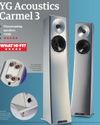
YG Acoustics Carmel 3
On paper, the Carmel 3 from Colorado-based speaker specialist YG Acoustics has a credibility problem. They cost a huge amount of money but are small, rather plain-looking two-way floorstanders.
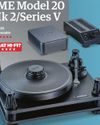
SME Model 20 Mk 2/Series V
SME launched the Model 20 turntable back in 1992. The partnering tonearm on our review sample, the now legendary Series V, dates back even further to 1986.
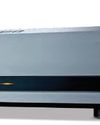
TOP FIVE LAUNCHES
Five products to look out for this month
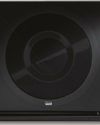
Real slim shady...
FOR Slim profile, superb dispersion, soundstage AGAINST Can get a little expensive
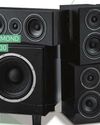
THE BIG PICTURE
This projector-based home cinema set-up aims to please

MOVIES ON THE MOVE
Great pictures and quality sound-wherever you are
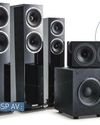
DREAM CINEMA
An incredible high-end home cinema experience, at a price

GAMING GEM
Serious gamers will be well served by this serious rig

CINEMATIC STUNNER
A truly immersive system for both gaming and movie nights

SOUNDBAR SUPERSTAR
The benefits of a surround set-up, without the fuss